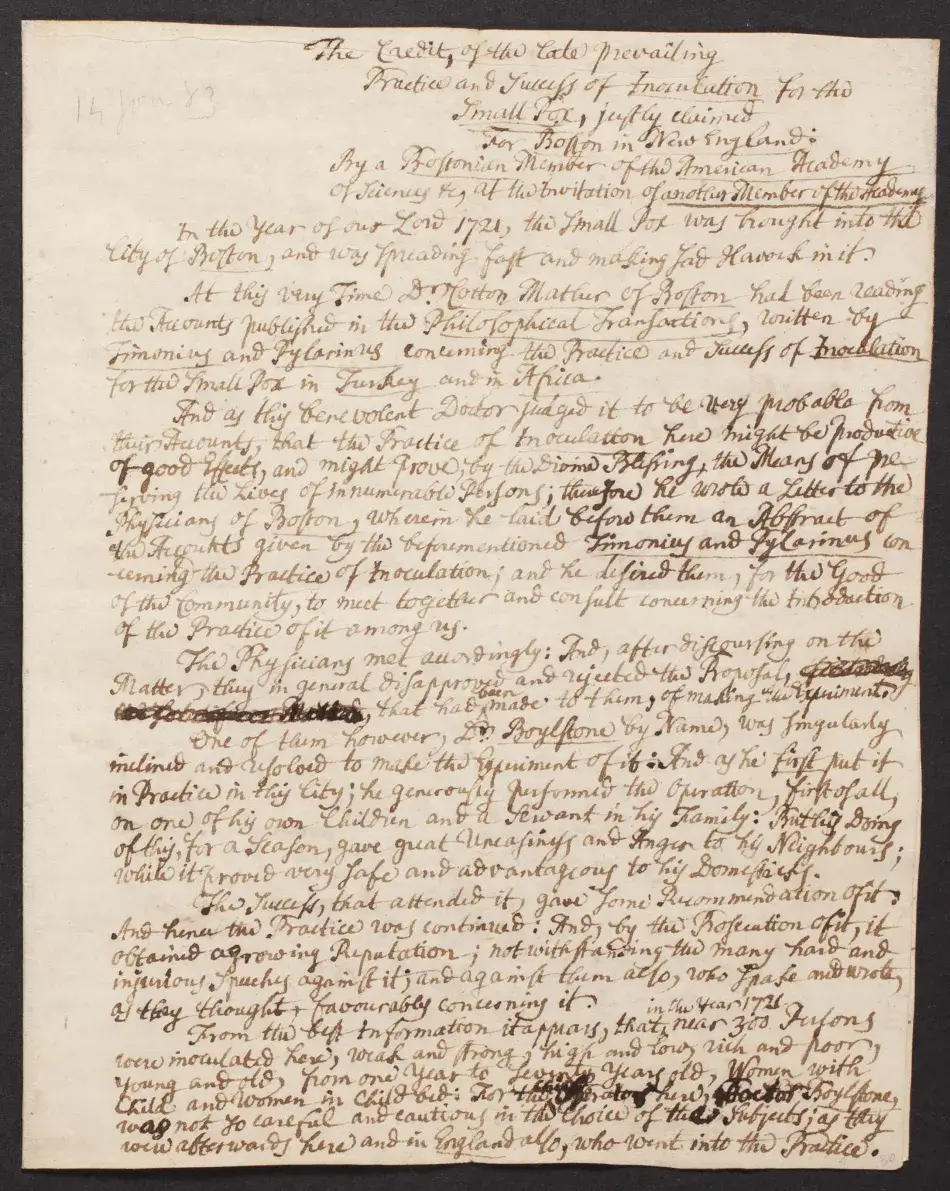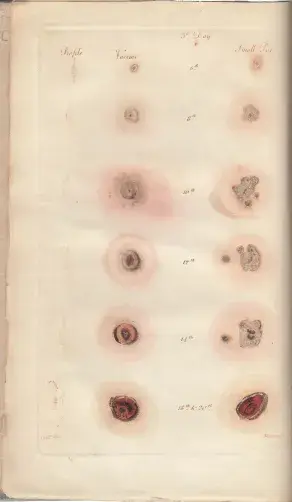In 1783, a self-described “Bostonian Member of the American Academy… at the request of another Member,” detailed the efforts of Reverend Doctor Cotton Mather to combat smallpox through inoculation in a letter to the Academy titled "The Credit, of the late prevailing Practice and Success of Inoculation for the Small Pox, justly claimed for Boston in New England":

In 1721 smallpox was running rampant in Boston, “spreading fast and making sad havock [sic] in it”:
"At this very Time Dr. Cotton Mather of Boston had been reading the Accounts published in the Philosophical Transactions, written by Timonius and Pylarinus concerning the Practice and Success of Inoculation for the Small Pox in Turkey and in Africa. And as this benevolent Doctor judged it to be very probably from their Accounts, that the Practice of Inoculation here might be productive of good Effects, and might prove, by the Divine Blessing, the Means of preserving the Lives of innumerable persons; therefore he wrote a Letter to the Physicians of Boston, wherein he laid before them an Abstract of the Accounts given by the two beforementioned [sic] Timonius and Pylarinus concerning the Practice of Inoculation; and he desired them, for the Good of the Community, to meet together and consult concerning the introduction of the Practice of it among us."
Only one doctor, Zebdiel Boylston, agreed to attempt inoculation, which he performed—with success—on his own child and two servants. Unconvinced, the medical and religious communities continued to speak out against the practice, forcing Boylston and Mather to appeal to their peers across the Atlantic. Through Mather’s influence, Boylston gained an audience with the Royal College of Physicians and convinced them to undertake the practice. Their successes culminated in overwhelming public support, which in turn helped to change the minds of the skeptics back in Boston, where Mather had continued to make the case for inoculation.
"That Friend of the human Race, Dr. Mather, first recommended it for Trial at Boston: And, being tried, in consequence of that Recommendation, it met with great success: And hence in England they soon began to practice it… And, whereas it has been practiced ever since, continual and great success has attended it. Upon the whole therefore, Boston, and the Gentleman who recommended it to the Physicians and people of Boston, ought to have the Credit of bringing forward and promoting the use of this satisfactory Practice in the World: For had it not been for them, it is probable, that the Practice of Inoculation would have remained unused and unnoticed; though it might have remained in use stil [sic] in Turkey and some parts of Africa."
In a later letter dated October 20, 1787 to the Academy, physician and Academy member Benjamin Waterhouse requests to peruse a letter from Samuel Mather to Academy on "origin of inoculation in N England". From this, the attribution for the letter on "The Credit, of the late prevailing Practice and Success of Inoculation for the Small Pox" is given to Cotton Mather's son, Samuel Mather.
Sources
The Credit, of the late prevailing Practice and Success of Inoculation for the Small Pox, justly claimed for Boston in New England, by [Samuel Mather], ca. 1783. Series I-C-1: General records. Communications to the Academy – Bound, 1780-1810. Archives, American Academy of Arts and Sciences, Cambridge, Massachusetts.
Letter from Benjamin Waterhouse, 1787 October 20; Cambridge, [MA]. Series I-B-1: General records. Letterbooks. Bound letterbooks. Volume 1, 1780-1791. ibid.
Photo credit: col. ill. (engraving), "A Coloured Engraving, Representing a comparative View of the various Stages of the Vaccine and Small Pox". "Practical Observations on Vaccination", by John Redman Coxe (1773-1864). 1802. Archives, American Academy of Arts and Sciences, Cambridge, Massachusetts.
